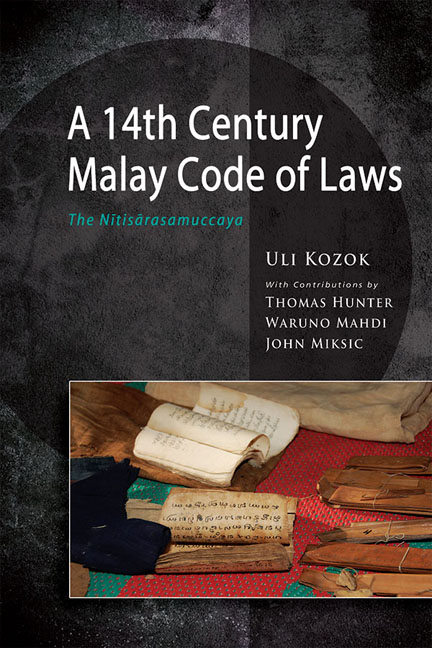Book contents
- Frontmatter
- Contents
- List of Tables
- List of Figures
- Abbreviations
- Preface
- About the Contributors
- 1 Pusaka: Kerinci Manuscripts
- 2 Kerinci and the Ancient History of Jambi
- 3 Tanjung Tanah Manuscript TK 214
- 4 Script and Language of the Tanjung Tanah Manuscript
- 5 Tanjung Tanah Manuscript TK 215
- 6 Sanskrit in a Distant Land: The Sanskritized Sections
- Bibliography
- Index
- Nalanda-Sriwijaya Series
- Images of TK 214
5 - Tanjung Tanah Manuscript TK 215
Published online by Cambridge University Press: 19 May 2017
- Frontmatter
- Contents
- List of Tables
- List of Figures
- Abbreviations
- Preface
- About the Contributors
- 1 Pusaka: Kerinci Manuscripts
- 2 Kerinci and the Ancient History of Jambi
- 3 Tanjung Tanah Manuscript TK 214
- 4 Script and Language of the Tanjung Tanah Manuscript
- 5 Tanjung Tanah Manuscript TK 215
- 6 Sanskrit in a Distant Land: The Sanskritized Sections
- Bibliography
- Index
- Nalanda-Sriwijaya Series
- Images of TK 214
Summary
The pusaka collection of Tanjung Tanah contains a total of ten manuscripts (TK 214–23, according to Voorhoeve's Tambo Kerintji, 1941). Six of those are written in a Javanese type of script on lontar (palm leaf) and are difficult to decipher. One of which is the Tanjung Tanah manuscript and the remaining three are documents written in Jawi script on paper. During my visits to Tanjung Tanah in 2002 and 2003, I found only one of the three Jawi script documents, namely TK 215, but at that time I did not pay much attention to this document since my study focused on the Kerinci script and I merely took a few photographs of the first few pages of the manuscript for documentary purposes. When I realized the importance of TK 215 to the study of TK 214, I revisited Tanjung Tanah in the hope that I would again be granted access to the manuscripts. This time, however, circumstances had changed. The woman who was entitled to keep the sacred heirlooms in her house had passed away. Before a successor was elected, her husband could only serve as the interim caretaker and was hence reluctant to let me see the pusaka collection without the explicit permission of the owners. Some of the owners apparently linked the premature death of the woman in whose house the collection was kept with the fact that I had seen the sacred heirlooms.
Realizing that I would not be able to revisit the collection, I asked the caretaker to provide me with photocopies of the text that he took a few years ago. In the meantime, the caretaker had worked on the text himself and had “enhanced” the original text by adding vowel signs. Fortunately these additions did not interfere too much with a clear reading of the text. Eric van Reijn, my former colleague from the University of Auckland, and I corrected Abdul Hamid's transliteration in the Tambo Kerintji, which was later revised again by Jan van der Putten from the National University of Singapore.
- Type
- Chapter
- Information
- A 14th Century Malay Code of LawsThe Nitisarasamuccaya, pp. 221 - 280Publisher: ISEAS–Yusof Ishak InstitutePrint publication year: 2015

